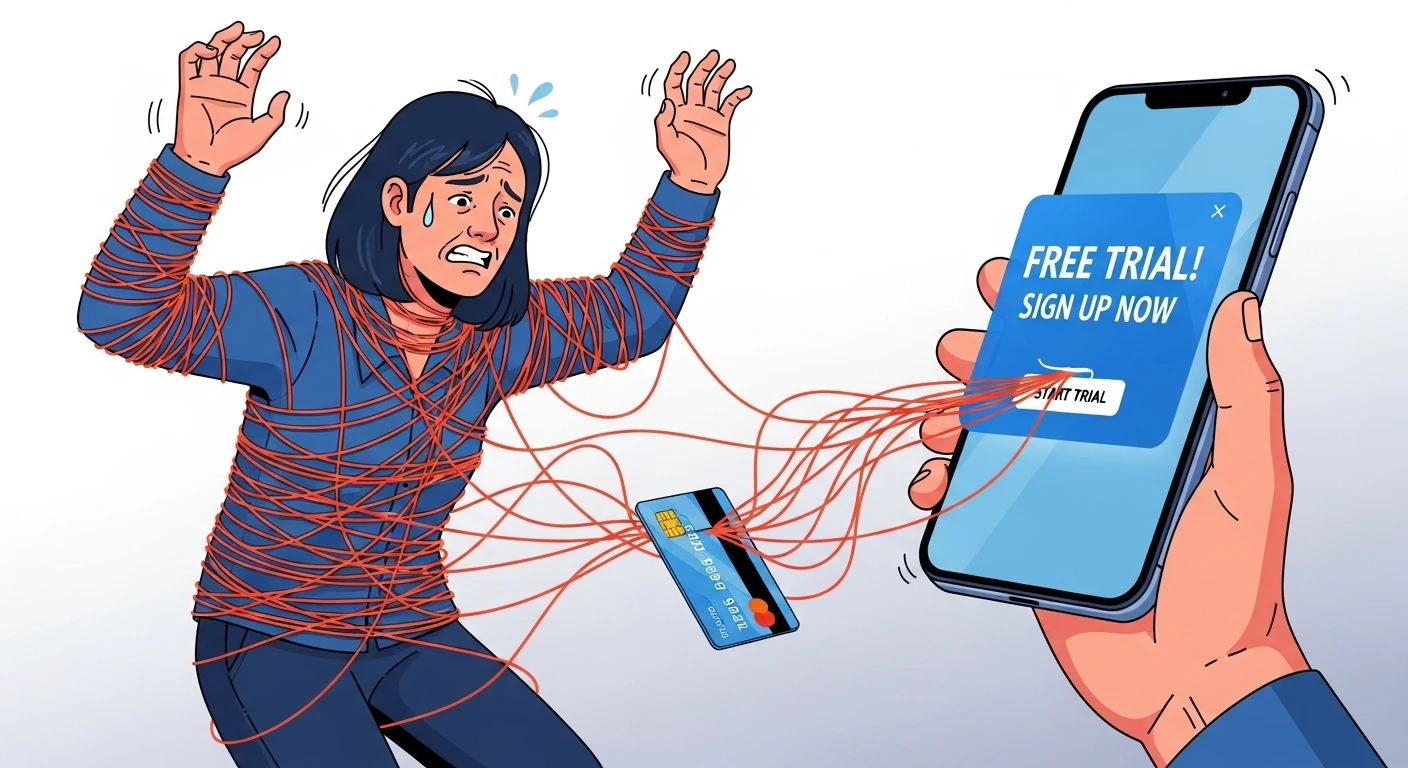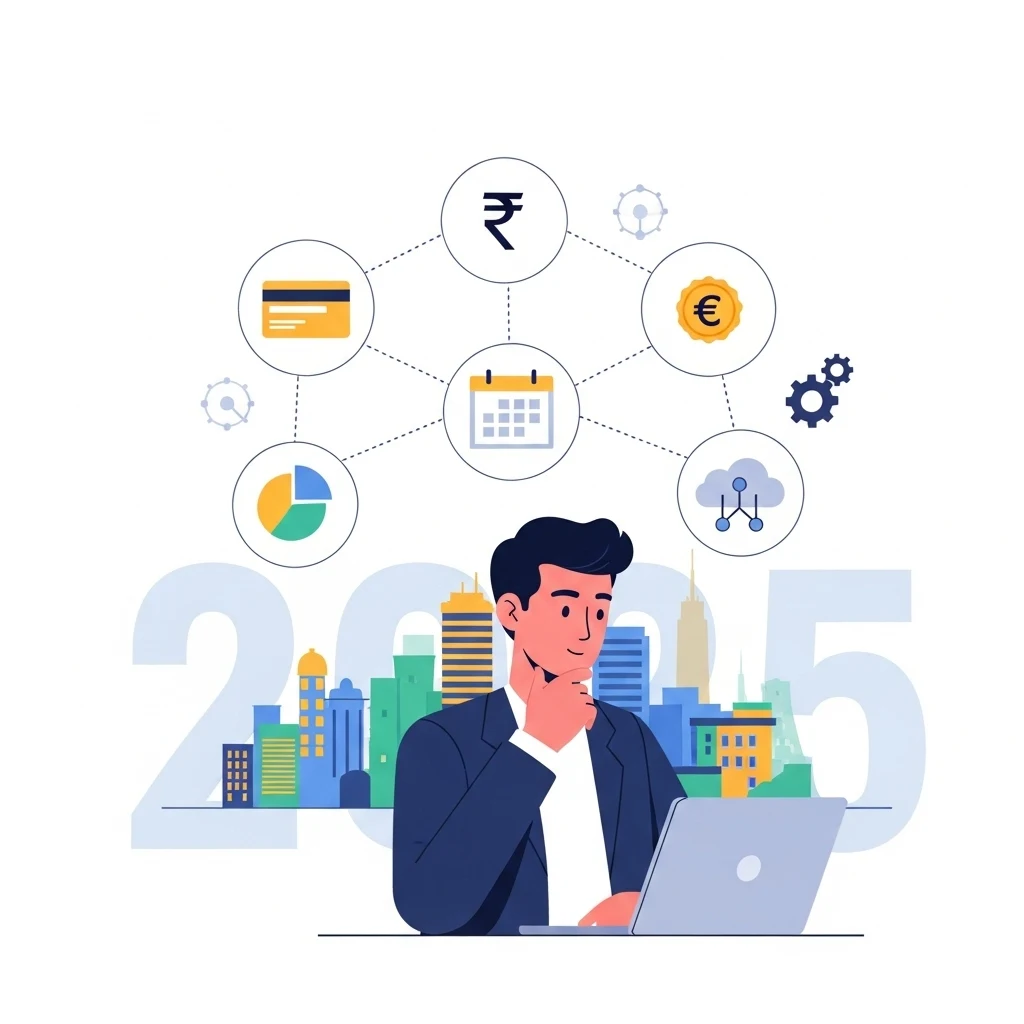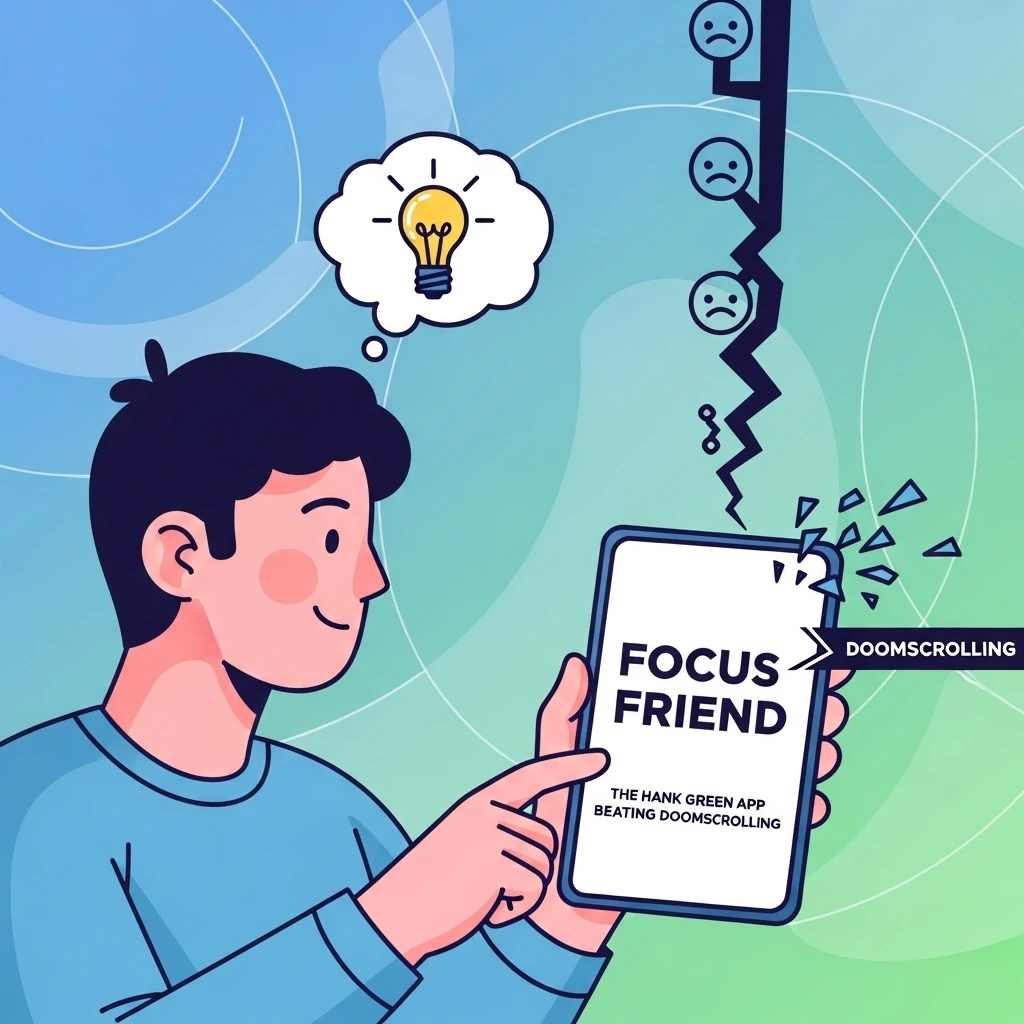The Free Trial Trap in India: How Dark Patterns Trick You (and How to Legally Beat Them)
By Amandeep Singh
Founder, Cancelmates. We fight deceptive subscription practices for you.
It’s a story familiar to millions across India. You see an ad for a new streaming service or app, offering a tempting "30-day free trial." You sign up, enjoy the service, and then forget about it. A month later, a notification from your bank alerts you to a charge you never approved. You've just become the latest victim of the free trial trap.
This isn't an accident; it's a meticulously designed system. Companies use manipulative interface designs known as **"dark patterns"** to make it incredibly easy to sign up but a nightmare to cancel. The good news? Indian authorities are cracking down, and you have more power than you think. This is your ultimate guide to understanding these traps, knowing your legal rights, and taking back control.

How to Beat the Free Trial Trap
1. What Are “Free Trial” Traps? (With Real Indian Examples)
A "free trial trap," also known as a subscription trap, is a business model where a company offers a free or low-cost introductory period for a service but makes it intentionally difficult for a user to cancel before it automatically converts into a full-priced, recurring subscription. They bank on you forgetting or giving up in frustration.
These aren't just happening abroad; they are rampant in India. The Central Consumer Protection Authority (CCPA) has taken action against major companies for these practices:
- BookMyShow: The ticketing platform was pulled up for **basket sneaking** by automatically adding a ₹1 donation to 'BookASmile' to every order without clear consent.
- IndiGo Airline: The airline was issued a notice for **confirmshaming**. During seat selection, the option to decline a paid seat was worded as "No, I will take the risk," using guilt to push users into a purchase. Following CCPA intervention, this was changed to a neutral "No, I will not add to the trip."
2. The Dark Patterns Behind “Free” Subscriptions
Coined by UX designer Harry Brignull, "dark patterns" are the specific tricks used to manipulate you. Once you learn to spot them, you'll see them everywhere.
Confirmshaming
Using language that makes you feel guilty or foolish for declining an offer. Example: A pop-up that says, "No thanks, I hate saving money."
Roach Motel
The design makes it incredibly easy to get into a situation (like signing up) but almost impossible to get out (like canceling).
Forced Continuity
Automatically billing your card after a free trial ends without a clear, prominent warning or an easy way to opt out.
Basket Sneaking
Adding extra items or charges to your cart without your consent, hoping you won't notice during checkout.
3. Your Legal Protections Under India's CCPA
You are not powerless. The Indian government, through the Department of Consumer Affairs and the Central Consumer Protection Authority (CCPA), is actively fighting against dark patterns. In 2023, they released guidelines specifically identifying and prohibiting these practices.
Key Protections for You:
- Prohibition of Deception: The guidelines explicitly forbid companies from using deceptive designs to mislead consumers.
- Identification of Dark Patterns: The government has officially defined 13 types of dark patterns, including subscription traps, false urgency, and basket sneaking, making them illegal unfair trade practices.
- A Platform for Complaints: Consumers can now report instances of dark patterns directly to the government through the **E-Daakhil platform**, giving you a formal way to seek redressal.
4. How to Get a Refund (Step-by-Step Guide)
If you've been unfairly charged, don't just accept it. Follow these steps to reclaim your money.
- Act Immediately & Cancel: The moment you see an unauthorized charge, log into the service and cancel the subscription. This prevents future charges.
- Document Everything: Take screenshots of the charge on your bank statement, any emails you received (or didn't receive), and the confusing cancellation process if you can replicate it.
- Contact Customer Support: Email or chat with the company's support team. Clearly state that you did not authorize the charge, that the auto-renewal was not clearly disclosed, and that you are requesting an immediate and full refund.
- Dispute the Charge with Your Bank/Credit Card: If customer support refuses to help, call your bank or credit card provider and file a "chargeback" or "dispute." Explain that the merchant engaged in deceptive billing practices. Your documentation will be crucial here.
- File a Complaint with the CCPA: As a final and powerful step, file a formal grievance on the government's E-Daakhil portal. This puts official pressure on the company to resolve the issue.
5. Pro Tips to Avoid Getting Charged in the First Place
The best way to win the game is not to play. Here's how to protect yourself.
- Set a Calendar Reminder: The moment you sign up for a trial, set a reminder on your phone for 2-3 days *before* the trial ends. This is the single most effective tactic.
- Use Third-Party Subscriptions: Whenever possible, subscribe through the Apple App Store or Google Play Store. Both platforms provide a single, centralized place to view and cancel all your subscriptions with one click, bypassing the company's own difficult website.
- Use Virtual Cards or UPI Mandates: Use a service that creates a virtual credit card for a single merchant, which you can then pause or delete. Alternatively, for UPI, review your active mandates and cancel the auto-pay instruction before the renewal date.
- Read the Fine Print on the Payment Page: Before you enter your card details, look for a pre-ticked box that says "Automatically renew my subscription." Always uncheck it.
Need to Cancel a Specific Subscription?
Navigating a specific company's cancellation maze can be tough. We've created step-by-step guides for India's most popular services.
→ See Our Guide on How to Cancel SonyLIV
→ See Our Guide on How to Cancel Hotstar
6. Frequently Asked Questions
Q: Can I get a refund for a free trial charge in India?
A: Yes, it is possible. If you can prove that the auto-renewal terms were not clearly disclosed or that the cancellation process was intentionally difficult, you have a strong case. Following the steps of contacting support and then disputing the charge with your bank is the most effective method.
Q: Are dark patterns illegal in India?
A: Yes. As of 2023, the Central Consumer Protection Authority (CCPA) has officially classified 13 specific dark patterns, including subscription traps, as "unfair trade practices," making them illegal and subject to penalties.
Q: What is the easiest way to manage my subscriptions so I don't get trapped?
A: The simplest method is to subscribe through a centralized service like the Apple App Store or Google Play Store. They list all your active subscriptions on a single page and allow you to cancel any of them with just one or two taps, regardless of the company's own policies.


